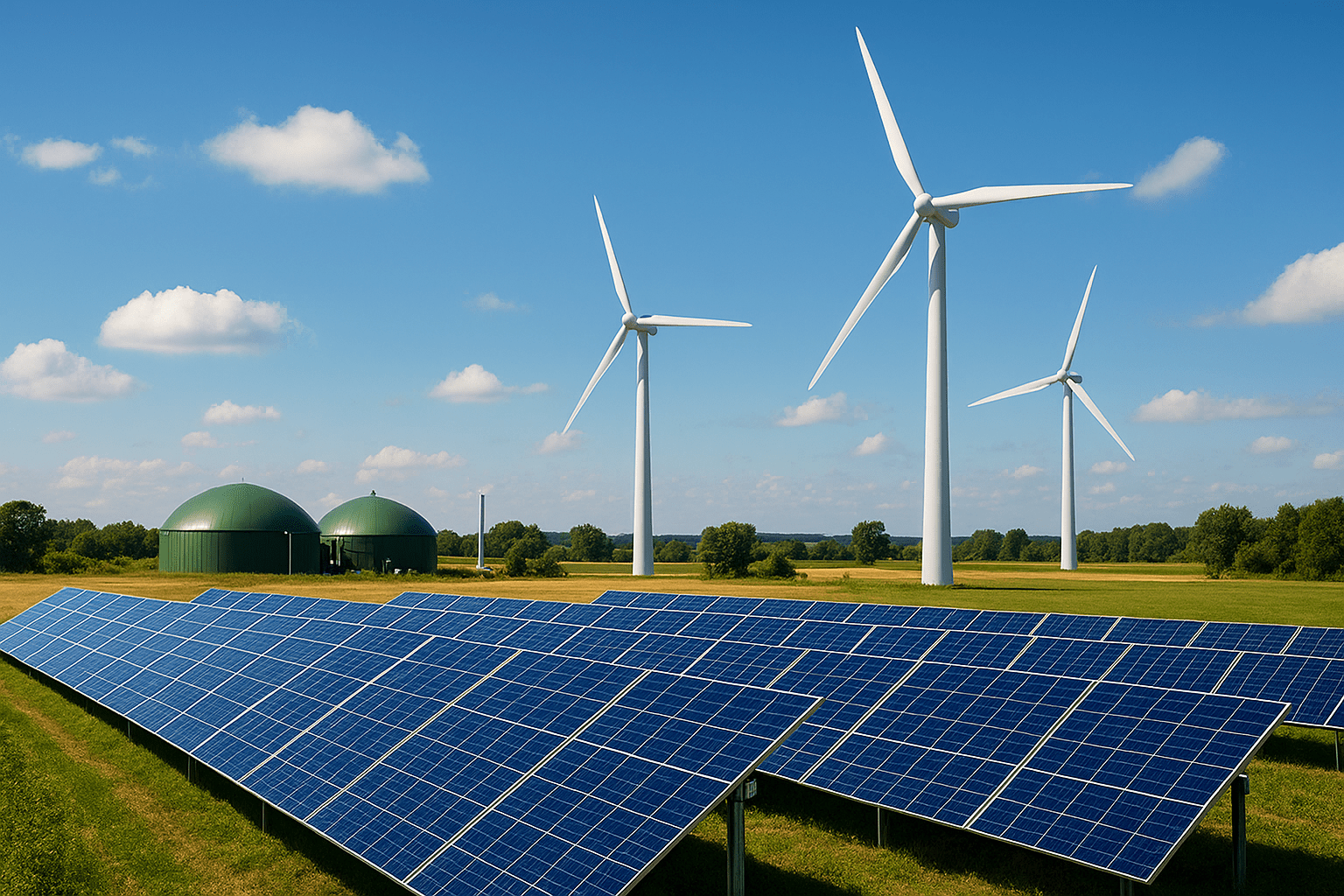If solar rays could shine down and provide your home with energy, winds could provide energy for a city, and oceans could charge cars, what would you do? It’s far from a daydream or some future utopian goal; instead, it is all happening nowadays. With the world facing the realities of climate change, renewable energy options are no longer alternative considerations but imperative needs.
In this very guide, we will discuss the increasing relevance of renewable energy, its types, and the real-world impact of alternatives. Of course, you will receive actionable tips for adopting alternatives and the future outlook for alternatives. Whether you are an environmentally conscious homeowner or an enterprising business leader, such insights will be of great help to steer you through this energy revolution.
Why Renewable Energy Sources Are Important
Time is running out for our planet. As per the IEA, global carbon emissions resulting from energy production levels hit record highs in 2023. In the meantime, while fossil fuels are still at their peak, they are also polluting and finite. Renewable energy sources, on the other hand, are clean, sustainable, and, in a way, economic right now.
High is the Stake:
- Climate Impact: Energy-sector emissions comprise over 70 percent of global greenhouse gas emissions.
- Resource Depletion: Fossil fuels such as coal, oil, and natural gas are actually non-renewable and getting scarce fast.
- Energy Security: These countries go to war and carry out military adventures over reserves of oil and gas. On the other hand, the renewable ones offer independence and stability.
Key Types of Renewable Energy Sources
1. Solar Energy:
Sunlight is captured using photovoltaic (PV) panels or solar thermal systems. Today’s leaders, like SunPower, First Solar, and Tesla, are making solar accessible for homes and businesses alike.
- Best for: Residential rooftops, remote areas, utility-scale farms
- Pros: Abundant, low maintenance, rapidly declining costs
- Challenges: Weather-dependent, high upfront installation costs
2. Wind Energy:
The turbines generate electricity via the force of the wind. Particularly in Denmark, the UK, and the US, onshore and offshore wind farms are growing rapidly.
- Best for: Coastal and open-land regions
- Pros: Zero emissions, scalable, minimal land disruption
- Challenges: Noise concerns, visual impact, bird and bat disruption
3. Hydropower
Energy generation by harnessing water power is the major method in hydropower. Major players include the Three Gorges Dam in China and the Hoover Dam in the USA.
- Best for: Areas with rivers and elevation changes
- Pros: Reliable base-load power, long lifespan
- Challenges: Ecological disruption, displacement of communities
4. Geothermal Smaug
This type of energy generation, in which thermal in the Earth is exploited for producing electricity and heating services. Countries such as Iceland and Kenya stand leaders in this technology.
- Best for: Volcanically active regions
- Pros: Camber, low emissions, and occupies less land
- Challenges: Extremely site-specific, limited locations
5. Biomass/Bioenergy
Organic matter, like agricultural wastes, wood chips, or algae, is turned into fuel or power.
- Best for: Rural/industrial areas with large quantities of organic waste
- Pros: Waste reduction, renewable energy, and carbon neutral when managed well
- Cons: Can lead to emissions if wrongly handled; competes for land use
How to Shift to Renewable Energy: A Stepwise Guide
Step 1: Analyze Your Energy Needs
An energy audit is done first to know how much energy you really spend. Applications such as JouleBug and the Sense Energy monitor track consumption.
Step 2: Search for Incentives in Your Area
Many governments provide tax credits, rebates, or grants for installations using renewable energies. In the United States, a common one is the Federal Solar Investment Tax Credit (ITC).
Step 3: Choose the Technology That Fits
- For homes: Solar panels with batteries (e.g., Tesla Powerwall)
- For commercial locations: Wind turbines, geothermal heat pumps
- For municipal places: Community solar farms; district heating systems
Step 4: Work with Certified Installers
Consider installers certified by the NABCEP, that is, the North American Board of Certified Energy Practitioners, or relevant local authorities.
Step 5: Keep Monitoring and Maintenance Up To Date
Smart systems offer the capability to record output for further performance optimization. Routine maintenance is the key to facilitating the lifespan and the ROIs.
Real-World Case Study: Solar Adoption in Germany
Germany leads Europe in solar adoption despite having relatively low sunlight compared to other nations. Through consistent policy, citizen participation, and investment in storage solutions, solar energy now contributes over 10% of the country’s electricity mix. The key? Long-term commitment, community buy-in, and decentralization.
Actionable Tips for Embracing Renewable Energy
- Start Small: Use solar-powered outdoor lights or portable chargers.
- Switch to Green Providers: Choose utility companies that source from renewables.
- Upgrade Appliances: Energy-efficient appliances reduce consumption and make renewable use more effective.
- Educate Your Community: Host awareness sessions or support local clean energy projects.
- Invest in Renewable Stocks or ETFs: Support the industry financially while diversifying your portfolio.
Common Mistakes to Avoid
- Focusing Only on Cost: While price matters, consider durability, scalability, and long-term savings.
- Ignoring Maintenance: Even renewable systems require upkeep to stay efficient.
- Overestimating Off-Grid Capability: Total energy independence is possible, but it needs careful planning and significant investment.
- Neglecting Storage Solutions: Without batteries or thermal storage, excess energy often goes unused.
What’s Next: The Future of Renewable Energies
The renewable sector stands on a fairly new and fast-evolving field with changing technologies and business models. Thus, one should expect to see:
- Floating Solar Farms: Especially for countries that lack land
- AI-Optimized Energy Grids: To scale supply with demand in real-time
- Next-Gen Batteries: Solid-state and flow batteries for adequate storage capacity
- Green Hydrogen: From renewable sources in transport and industry
- Microgrids: Local systems offering local resilience at the community level
More than 75% of the power capacity additions globally in 2024 were said to be renewables, and this number will be even more now, according to BloombergNEF.
Conclusion: A Cleaner, Smarter Energy Future Starts Now
Beyond a mere trend, renewable energy is the basis for a sustainable future. Solar panels perch on suburban rooftops, while offshore wind farms provide energy to cities, and the big possibilities are indeed pressing.
It’s your turn to step up. Whether by installing a rooftop system, investing in clean energy, or rallying for smarter policies, you’re one more step toward an enormous transformation.
Do you want to power your life with clean energy? Start by looking for solar quotes, converting energy providers to green ones, and subscribing to more insight on the energy landscape’s transformation today. The future is renewable and begins with action.




